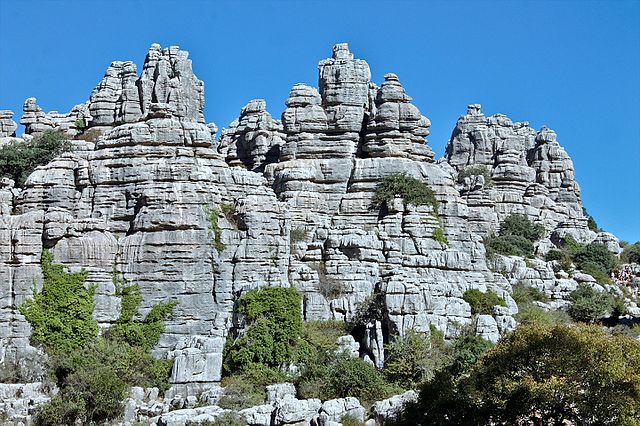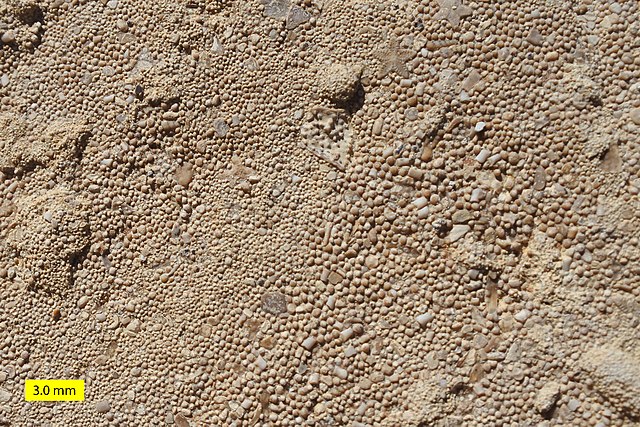Karst is a topography formed from the dissolution of soluble carbonate rocks such as limestone, dolomite, and gypsum. It is characterized by features like poljes above and drainage systems with sinkholes and caves underground. More weathering-resistant rocks, such as quartzite, can also occur, given the right conditions.
Škocjan Caves, Slovenia
Lijiang fengcong (cone karst) in Guilin as part of the South China Karst.
Karst formation of the Serra de Tramuntana
Global distribution of major outcrops of carbonate rocks (mainly limestone, except evaporites)
Limestone is a type of carbonate sedimentary rock which is the main source of the material lime. It is composed mostly of the minerals calcite and aragonite, which are different crystal forms of CaCO3. Limestone forms when these minerals precipitate out of water containing dissolved calcium. This can take place through both biological and nonbiological processes, though biological processes, such as the accumulation of corals and shells in the sea, have likely been more important for the last 540 million years. Limestone often contains fossils which provide scientists with information on ancient environments and on the evolution of life.
Limestone outcrop in the Torcal de Antequera nature reserve of Málaga, Spain
This limestone deposit in the karst of Dinaric Alps near Sinj, Croatia, was formed in the Eocene.
Ooids from a beach on Joulter's Cay, The Bahamas
Ooids in limestone of the Carmel Formation (Middle Jurassic) of southwestern Utah.








